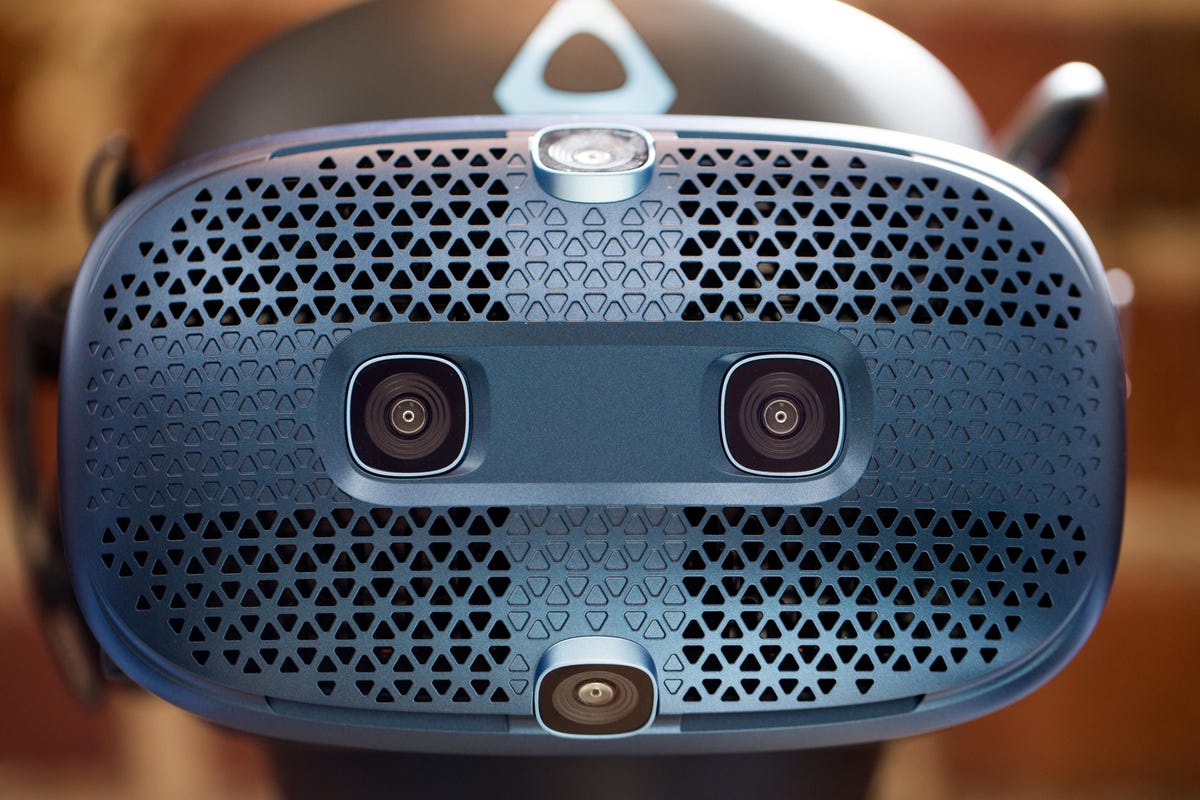
The HTC Vive Cosmos VR headset was designed to replace the original Vive. HTC improved the comfort and resolution, and made it ready to go right out of the box. There aren't any Lighthouse base stations to set up and mount.
In terms of comfort, the Cosmos is lighter and better balanced than the original Vive.
It uses inside-out tracking via six built-in cameras to track your movements within a space.
One of the more novel additions is a flip-up headset which makes it simple and fast to go between a VR experience and back into reality without removing the entire headset.
The Cosmos isn't the first headset to offer the flip-up feature. The Hololens 2 and some of Microsoft's VR headsets also have a flip-up design.
Flipping up the headset brought me a lot of joy.
HTC designed the front faceplate on the Cosmos to be removable. The idea is that you can add "mods" to expand the functionality of the headset down the line.
The mesh pattern isn't just for looks. It also helps with ventilation.
Here's the Cosmos with its front plate removed.
Here's a close-up shot of one of the six cameras that the Cosmos uses for tracking.
This small fan keeps all the cameras cool as well as helping alleviate some of the heat from your face and head.
The Cosmos offers a higher resolution than the original Vive headset.
HTC also uses RGB sub-pixels to help minimize the rainbow "screen door effect" that can sometimes be experienced in VR.
The Cosmos has two new controllers that are much smaller that those from the original Vive.
Below the joystick is the "Vive button" which can bring up "the Lens" aka a heads-up display menu. You can also double-tap the Vive button to activate the pass through camera to see what's outside your headset.
The HTC Vive Cosmos will be available on Oct. 3 and goes on pre-sale Sept. 12. By the way, when you preorder the Cosmos, you get a 12-month Viveport Infinity subscription with access to over 700 games and VR experiences.
For more about the HTC Vive Cosmos, check out our first impressions story.

